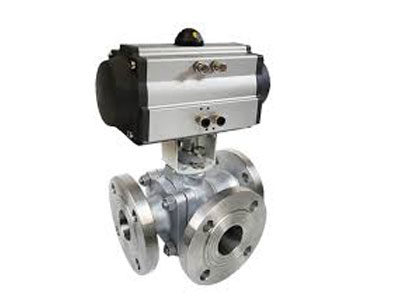What Is The Flow Control Valve?
Key Takeaway
A flow control valve regulates the flow rate or pressure of a fluid, typically used in hydraulic, pneumatic, and water systems. In hydraulic systems, it controls the flow of pressurized fluid to manage the speed of fluid-powered machinery. In pneumatic systems, it adjusts the flow of compressed air to control the speed of pneumatic cylinders. Flow control valves also play a crucial role in irrigation and waterworks by managing the flow at various points like outlets and reservoir inlets.
There are various types of flow control valves, including needle valves for fine adjustments, globe valves for precise control, and ball valves for quick on/off control. These valves can be mechanically, electronically, or hydraulically operated, often responding to signals from devices like flow meters or temperature gauges to ensure consistent performance and avoid system damage.
Overview of Flow Control Valve Designs and Types
Flow control valves come in various designs tailored to specific operational requirements. The most common types include:
1. Ball Valves: Efficient for on-off control and suitable for high-pressure applications.
2. Needle Valves: Provide precise flow control, ideal for low-flow systems.
3. Gate Valves: Best for isolating flow, commonly used in pipelines.
4. Butterfly Valves: Compact, lightweight, and perfect for high-flow systems.
Each type offers unique benefits based on the application. For instance, ball valves provide durability under high pressures, while butterfly valves offer fast operation and minimal space usage. Additionally, modern smart valves integrate IoT technology for remote monitoring, enabling enhanced control over complex systems.
Choosing the right valve type ensures efficiency and system longevity, saving both time and resources. Engineers must analyze the operational needs before selecting the valve design, as this decision directly impacts performance and safety.

Key Components and Their Functions in Flow Control Valves
Every flow control valve has several crucial components, each playing a distinct role:
Body: The outer casing that houses internal parts and withstands operational pressures.
Seat: Ensures a tight seal when the valve is closed, preventing leaks.
Stem: Connects the actuator to the internal mechanism, enabling movement.
Actuator: Provides the force required to open or close the valve, either manually or automatically.
Control Orifice: Regulates fluid flow by adjusting its opening size.
The interplay of these components allows precise control over flow rates. High-quality materials in construction ensure durability and performance under varying conditions. Engineers must also consider factors like material compatibility, as improper selection can lead to corrosion or failure.
Understanding these components is vital for maintenance and troubleshooting. A malfunction in any part can disrupt operations, highlighting the importance of regular inspections.
How Flow Control Valves Regulate Fluid Flow
Flow control valves work by manipulating the flow area to adjust the fluid rate. This is achieved using:
Manual Control: Operators manually adjust the valve to change the flow rate.
Automatic Control: Sensors and actuators respond to system requirements, optimizing flow in real-time.
For example, in hydraulic systems, these valves maintain consistent pressure by compensating for load changes. Similarly, in cooling systems, they regulate the coolant flow to maintain desired temperatures.
Advanced models incorporate proportional control mechanisms. These allow gradual adjustments, offering precision and reducing wear on components. By maintaining the balance between supply and demand, flow control valves ensure system stability, prevent energy loss, and reduce operational costs.
Benefits of Using Flow Control Valves in Systems
Flow control valves provide multiple benefits across industries:
1. Precision: They allow accurate flow regulation, essential in sensitive processes like pharmaceutical manufacturing.
2. Energy Efficiency: By optimizing fluid flow, they reduce energy consumption and operational costs.
3. System Safety: Prevents overpressure conditions and ensures consistent operation.
4. Extended Equipment Life: Minimizes wear and tear on pumps and other components by maintaining optimal flow.
For instance, in chemical industries, these valves ensure the exact amount of reactants flow into reactors, avoiding waste or dangerous reactions. Similarly, HVAC systems rely on them to deliver consistent performance under fluctuating loads.
By incorporating flow control valves, industries achieve enhanced productivity and reduced downtime, making them indispensable in fluid systems.
Common Applications Across Industries
Flow control valves are vital in a variety of industries:
1. Oil & Gas: Regulate the transport of crude oil and natural gas through pipelines.
2. Water Treatment: Maintain pressure and flow in purification processes.
3. Automotive: Manage hydraulic systems, such as brakes and steering mechanisms.
4. Power Plants: Control steam flow for turbines, optimizing energy production.
5. Food & Beverage: Ensure precise ingredient mixing and temperature control.
Each application demands specific valve features. For example, in water treatment, valves must resist corrosion, while in power plants, they need to withstand high temperatures and pressures.
Engineers must understand the operational environment to select the most suitable valve type. Proper installation and maintenance ensure consistent performance, making these valves a backbone of industrial operations.
Conclusion
Flow control valves are indispensable in modern fluid systems. Their ability to regulate flow, improve efficiency, and enhance safety makes them a cornerstone of industrial operations. Understanding their design, components, and applications is crucial for engineers to ensure optimal performance.
Investing in high-quality flow control valves and their maintenance not only boosts productivity but also ensures long-term reliability. As technology evolves, these valves continue to adapt, becoming smarter and more efficient.
For any engineer stepping into the industry, mastering the basics of flow control valves is a critical first step toward handling complex fluid systems effectively.

